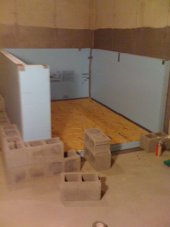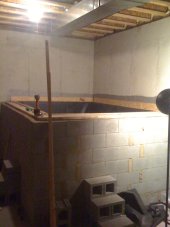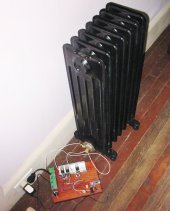myles
Autonomy Expert
- Joined
- Jan 24, 2021
- Messages
- 289
Hey Guys,
I wanted to create a separate thread to probe around and see how people are using the sol-ark smart feature to store energy overnight that doesn't involve batteries.
What is the smart feature: It is a feature that enables a load output to kick in once the batteries are charged and the load on the unit is less than what is being generated by PV, so you don't waste any generated power.
A bit of background, I am in Canada, in Manitoba, and we have COLD winters, sometimes we see -40F, and sometimes it is prolonged for multiple days or nights, and that of course happens when the sun is not emitting its power as well. My goal behind this is mainly for winter. My build will have propane as main heat source put into hydronic floor heating in a very efficient and air tight build package, and a backup generator in case batteries running low overnight. However, wouldn't it be great to not need to use as much propane and generator power? Obviously YES! So my plan was to slightly oversize my solar system in lieu of the less production in winter, and utilize the smart feature on the solark to "dump" that energy into some sort of heat storage enviroment.
PV System specs so far:
1. 12KW solar panel array
2. 12kw sol ark
3. 16s4P 48v battery setup, each cell 280ah
4. chargery 16 bms 100A each, qty 4 one hooked up to each bank (i think buying these was a mistake but will find out)
I am looking for feedback on the following ideas:
1. Dump excess heat into the garage floor to superheat the garage then use circulation pump to stabilize temps overnight in the house portion instead of using propane boiler to do this.
2. Having a large hotwater tank only for storage of hot glycol that is heated from the excess power, superheating this so that overnight a mixing valve will pull the heat out and put it into the floor of the house portion.
do we have others that have done anything similar with success? I've searched around and can only find the water heater method, which does appear to be the best, but feedback as always is appreciated :D
I wanted to create a separate thread to probe around and see how people are using the sol-ark smart feature to store energy overnight that doesn't involve batteries.
What is the smart feature: It is a feature that enables a load output to kick in once the batteries are charged and the load on the unit is less than what is being generated by PV, so you don't waste any generated power.
A bit of background, I am in Canada, in Manitoba, and we have COLD winters, sometimes we see -40F, and sometimes it is prolonged for multiple days or nights, and that of course happens when the sun is not emitting its power as well. My goal behind this is mainly for winter. My build will have propane as main heat source put into hydronic floor heating in a very efficient and air tight build package, and a backup generator in case batteries running low overnight. However, wouldn't it be great to not need to use as much propane and generator power? Obviously YES! So my plan was to slightly oversize my solar system in lieu of the less production in winter, and utilize the smart feature on the solark to "dump" that energy into some sort of heat storage enviroment.
PV System specs so far:
1. 12KW solar panel array
2. 12kw sol ark
3. 16s4P 48v battery setup, each cell 280ah
4. chargery 16 bms 100A each, qty 4 one hooked up to each bank (i think buying these was a mistake but will find out)
I am looking for feedback on the following ideas:
1. Dump excess heat into the garage floor to superheat the garage then use circulation pump to stabilize temps overnight in the house portion instead of using propane boiler to do this.
2. Having a large hotwater tank only for storage of hot glycol that is heated from the excess power, superheating this so that overnight a mixing valve will pull the heat out and put it into the floor of the house portion.
do we have others that have done anything similar with success? I've searched around and can only find the water heater method, which does appear to be the best, but feedback as always is appreciated :D





